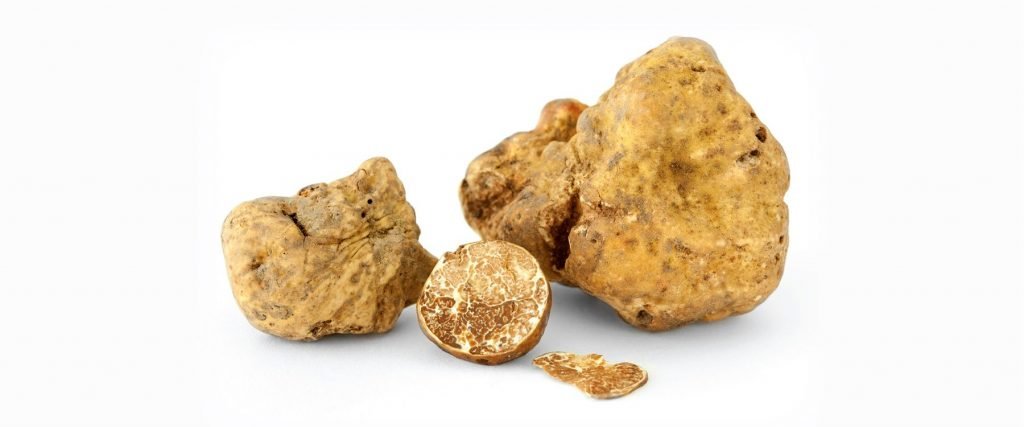They’re difficult to find, a pain to grow and lose their sexy aroma within a week!
Truffles — the non-chocolate kind, sorry — are edible fungi, like mushrooms. Unlike mushrooms, they grow underground near tree roots and the best truffles are wildly, insanely, wait-how-much? expensive, sometimes as much as thousands of dollars per pound.
Truffles are costly because they’re hard to find, frustrating to grow, and impossible to store for any length of time. They generally range from strawberry- to apple-sized, though larger ones have been discovered.
Though multiple species are found worldwide, prestige truffles come from specific areas, much like wine from celebrated regions of Europe and California.
Black truffles from France and white truffles from Italy are the two most highly valued. Even though they resemble evil spores from a 1960s Outer Limits episode, truffles are prized delicacies in gastronomy, the art of cooking and eating good food.
Some U.S entrepreneurs are cultivating truffles to become part of an industry estimated to grow to nearly $6 billion globally over the next two decades.
Truffle farms face formidable agricultural challenges, since truffles thrive only in a narrow band of weather conditions. Black truffles, for example, need mild winters, no frost, warm (not hot) summers, and dry winters, according to modernfarmer.com.
Grow a good truffle, however, and you’ll be rewarded by food fanatics clamoring for a seat at your table.
Ask aficionados to describe truffles and you’ll get baskets of adjectives: garlicky, mushroomy, earthy, pungent, musky, gamey. That’s because the truffle’s flavor comes not from its taste, but its aroma. Writers wax poetic about it:
“Presently, we were aware of an odour gradually coming towards us, something musky, fiery, savoury, mysterious, — a hot drowsy smell, that lulls the senses, and yet enflames them — the truffles were coming.”
— William Makepeace Thackeray, Memorials of Gormandizing, 1841

Truffles get their peculiar odor from a multitude of chemicals. In white truffles, bis(methylthio)methane is the key compound, according to the American Chemical Society. In black truffles, dimethyl sulfide and 2-Methylbutanal are found.
In addition to those scent molecules, truffles have pheromones, chemical substances that affect animals and insect behavior. They have androstenol, a steroidal pheromone found in humans, and androstenone, which boars produce for mating.
Modern research suggests truffles affect people because of the human pheromone. Others have commented on the phenomenon:
“The truffle is not a positive aphrodisiac, but on occasion it can make women more loving and men more lovable.”
— Alexandre Dumas, Grand Dictionnaire de Cuisine, 1871
The smell is also why pigs were originally used to sniff out truffles — they were drawn to the boar pheromone. Specially trained dogs are employed these days, since they don’t gobble up truffles as pigs do.
Unfortunately the unique odor starts to fade as soon as the truffle is dug up. Truffles don’t last longer than 7 to 10 days.
Truffles can be cooked, but are usually cleaned by hand and grated or sliced paper-thin atop warm food, which absorbs the truffle’s aroma. Other cooks put truffles in closed containers with food to impart a truffle flavor. You don’t need much since a little goes a long way.
In lieu of actual truffles, some people use less expensive truffle oil, which is “cooking oil, such as olive or sunflower oil, that has been infused with the aroma of white or black truffles,” according to Bon Appétit magazine.
SUMMARY Truffles are considered a complete source of protein and are high in carbs, fiber and several micronutrients.
Visit our online store : www.trufflenz.co.nz




Leave a Reply